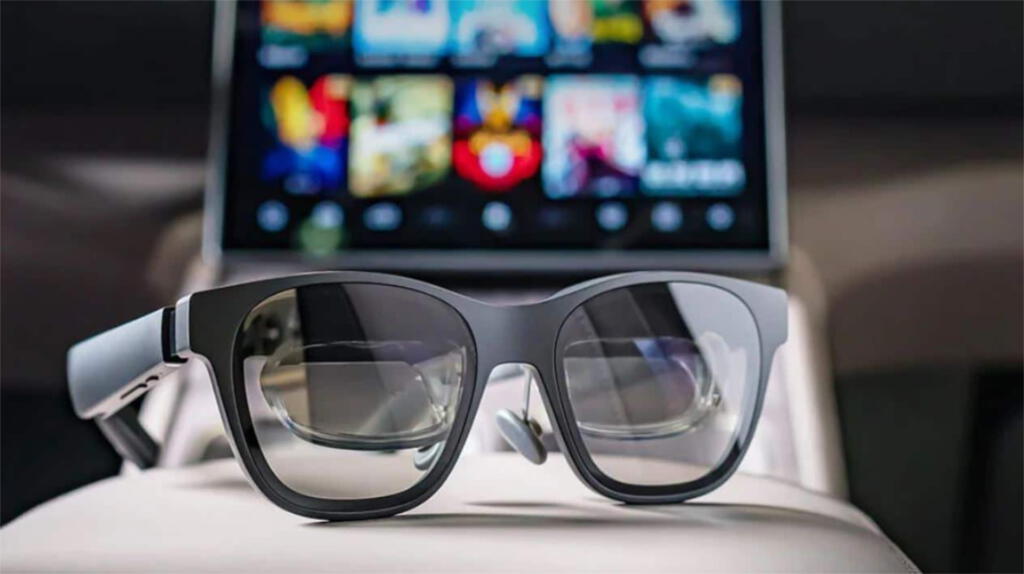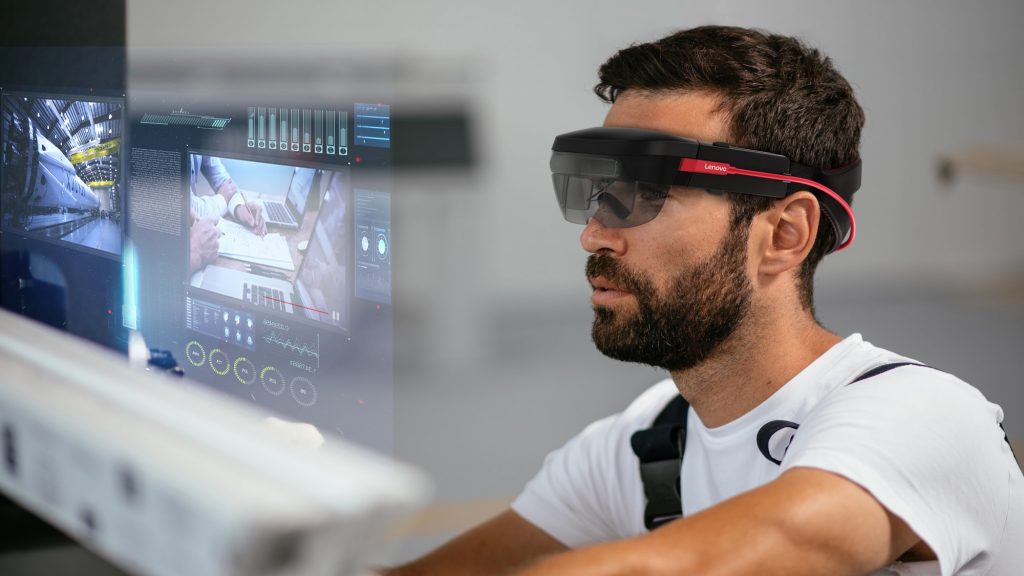Smart glasses are like our mobile phones. They function as user interface devices that connect us to the digital world. If they become easy to use and affordable, we’ll have a way to enter metaverse applications anytime and anywhere.
We present 7 approaches adopted by the pioneers of smart glasses to allow embracing the metaverse on a mass level.
Designing smart glasses that people would actually wear
The challenges that hinder the widespread use of smart glasses are known: they are heavy and expensive, their interfaces aren’t user-friendly, and in some cases, they aren’t aesthetically pleasing. Moreover, most of them suffer from low battery life and need to connect through cables.
#1 Lower barriers for developers and creators
Who has the knowledge, skills, and creativity to overcome these obstacles? Developers and creators will be the companies’ greatest assets on the way to building AR experiences that have widespread use.

Snap’s Spectacles collaborates with AR creators and developers who build immersive experiences to improve its glasses. Currently, the company doesn’t offer them to the public; they are only for professionals to test and come up with innovative ideas. Spectacles are integrated with Lens Studio, Snapchat’s AR app, to make the process easier.
Qualcomm follows a similar path with its Snapdragon Spaces that allow developers to access an open ecosystem of global operators and smartphone OEMs to build experiences for AR glasses that adapt to different environments.
#2 Fashionable glasses
Smart glasses should look good to reach more people. A company that specifically focuses on the design and fashion aspect is Nreal. The company produces lightweight, pocket-sized AR glasses that are ergonomically engineered.
Nreal has recently raised $15 million from the Korean sunglasses brand Gentle Monster to reach a wider audience. These kinds of strategic partnerships are indispensable for breaking into the mainstream.
#3 Increased compatibility
The Chinese AR manufacturer has also teamed up with Qualcomm to increase cross-platform smartphone compatibility. For example, one of its flagship products, Nreal Light, functions with 5G smartphones powered by Qualcomm. Users of these smart glasses just have to plug their phones to enter their AR portals.

#4 Virtual eyewear try-on experiences
Another notable partnership has taken place between Amazon Fashion and Snap. Thanks to this collaboration, Snapchat users can access new try-on experiences.
Virtual try-on apps are an essential stepping stone to mainstream metaverse adoption as they train consumers through concrete use cases like social media shopping.
Although Snapchat users don’t actually wear physical smart glasses in such applications, they get familiar with AR in a fun way, and their shopping journeys become engaging as well.
Inventing more use cases for smart glasses
Like shopping, there are numerous other ways to touch a person’s life via well-designed augmented reality solutions. Although there have been many business use cases of smart glasses so far, the consumer domain still has room for growth.
#5 Enhancement of sports and outdoor activities
One popular domain in this regard is metaverse fitness applications. Consider, for example, Ghost Pacer. The company makes smart glasses specifically for running. They enable the wearers to work out along with a trainer hologram who pushes them toward their goals.

#6 Voice commands open up new possibilities
Many consumers prefer voice commands and voice search to connect with devices over text-based alternatives. When smart glasses are integrated with speech recognition software, all kinds of hands-free applications become possible.
The smart glasses maker, Vuzix, works in this area. Its speech engine is capable of recognizing over 30 languages. Although the company focuses on enterprise customers, there is no reason consumer applications can’t make use of the technology. For instance, Google is developing AR glasses capable of translating languages in real-time and in front of your eyes.
#7 Solutions tailored for enterprises
Enterprise solutions are already playing important roles in the adoption of the metaverse through AR glasses.
In business settings, smart glasses allow private displays to prevent confidential data from being seen, guide workflow on the manufacturing floor, train in a safe environment, increase collaboration in real-time thanks to digital twins and speed up the construction pace.
Final Words
Augmented reality technology is paving the way to metaverse adoption by offering us wearable interfaces via glasses. It’s also an important factor that impacts the evolution of all things Web3, whether as an accelerator of geo search in the metaverse, enabler of phygital NFTs or acting as the platform for NFT displays.
Author

Nagi An is a content writer who is passionate about NFTs, web3, DAOs, and DeFi. She's covers a variety of topics about NFT fundamentals.




